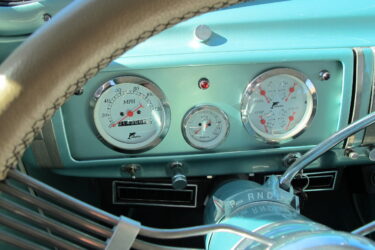Watches have played a part in motor racing for as long as we can remember. Cars and watches have many crossovers, and fans of one are almost intrinsically fans of the other. Mechanically, aesthetically and historically watches and cars are linked.
When it comes to motorsport in particular, they are highly dependent on timekeeping and speed, and watches allow drivers to monitor this.
We, of course, know lots about Heuer, the Rolex Daytona as well as some of the brands popularised motorsport, such as Richard Mille, but what is the full story behind motorsport and watches?
Where does the story begin?
The relationship between watches and motorsport goes back a fair way. Heuer was one of the pioneering brands in this space, making some of the very early ‘racing’ watches (and before that even made dashboard clocks).
These were used in rally cross and other endurance-based races to allow co-drivers to monitor lap times and distance. During the flying fifties, many drivers wore Heuer chronographs for their accuracy and functionality, making Heuer the preeminent name in motorsport. And then 1962 brought the release of the Heuer Autavia.
Heuer’s story continued with the Monaco (made famous by Steve McQueen in Le Mans) and the Carrera, two of the most iconic watches the brand has made. 1969 then brought about the Calibre 11, the first automatic chronograph.
So as can be seen, motorsport really gave brands like Heuer a purpose to innovate. Accuracy is just as important for watches as it is for racing and this is what really made brands such as Heuer strive for perfection in their racing watches.
Who were the other big players in the automotive bond?
There were a few other brands involved in motorsport. Of course, Rolex aptly named the Daytona after the famous race circuit and this is still given as a prize in many of the events nowadays.
Rolex is of course a major sponsor of Formula 1 as well, as we’ll touch on later. Aside from Rolex, Omega with the Speedmaster has a lot of history within the sport, and we do see brands such as Longines and Hublot involved in the sport as well.
As we’ve mentioned there are so many design and engineering commonalities when we compare watches and motorsport. Nowadays, through social media and various different digital outlets, we see watches on the wrists of some of the most iconic people in motorsport. In F1, Ferrari and McLaren drivers sport Richard Mille and Mercedes drivers,
Lewis Hamilton and George Russell wear IWCs. Beyond the classic watch brands, motorsport has undoubtedly helped to catapult brands like Richard Mille through the association with engineering and craftsmanship, commonalities between the two interests.
Watches will continue to play a pivotal role in motorsport as we move forward. Both on and off the track, watches are a truly classic part of the sport.
(Featured Image Reference: “20959 2010 Fall Classic Car Show Jim Price Chevrolet” by bsabarnowl is licensed under CC BY 2.0. )




